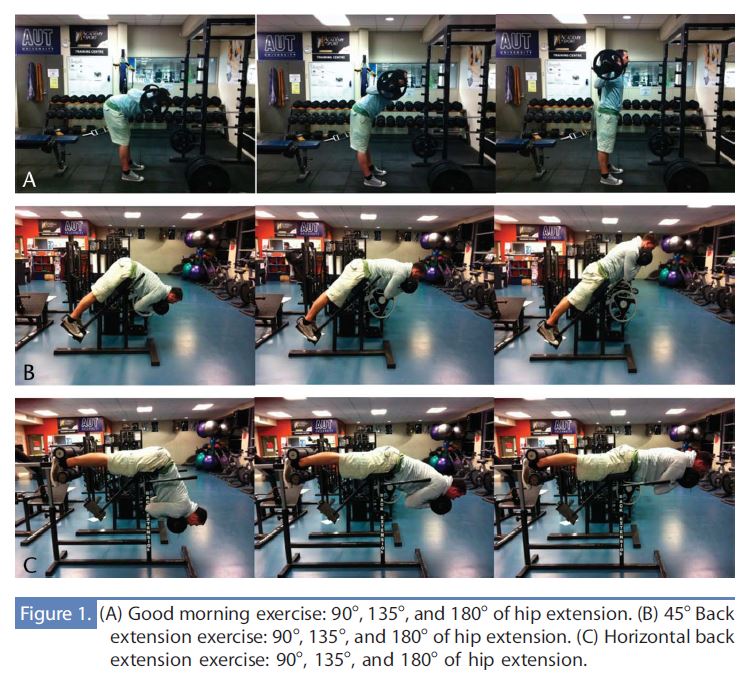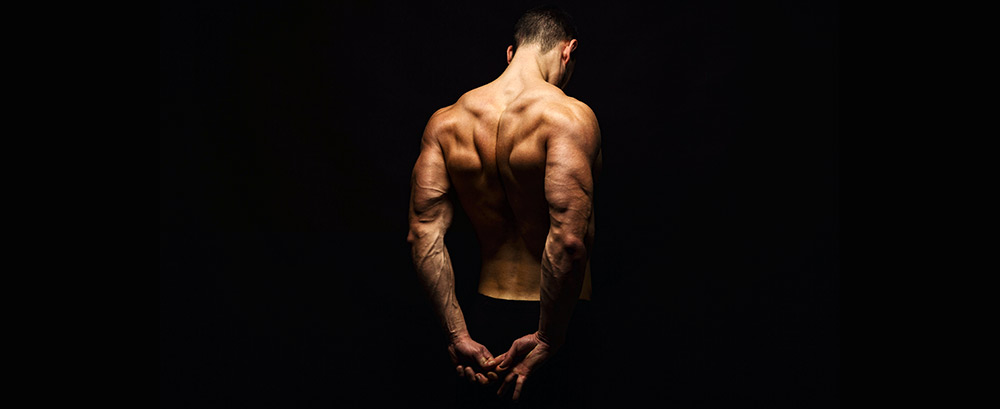Is it a good idea to push the floor apart while doing GMs?
Antti
Like Antti, "I'm not sure I get you. I don't really "push the floor apart" with the GM."
'What purpose does pushing the floor apart in a Good Morning serve?
I've found this to be harder on the hamstrings,
Might Be
Some form of Good Mornings are part of my program.
I'll give that a try and see how it feels.
With that in mind, let's look at...
Hamstring Good Mornings
In the Good Morning, more work is placed on the Hamstrings by keeping your knees fairly locked. They should be performed with a slight break in the knees.
"The Vertical" Good Morning overloads the bottom part of the movement.
"90 Degree Good Mornings"
Essentially, the 90 Degree/Parallel Back (Hip) Extension is a Good Morning.
The knees are primarily locked, which places more of the workload on the Hamstrings.
It overloads the top end, lockout part of the movement.
"
45 Degree Good Mornings"
It amounts to being a "45 Degree" Good Morning
The knees are primarily locked, which places more of the workload on the Hamstrings.
This movement overloads the middle range of the movement.
This video by Dr Bret Contreras break it down...
Hip Extension Exercises
Earlier this year I got a paper published in the SCJ titled, Are All Hip Extension Exercises Created Equal (click to download). I’m very proud of this paper and feel that it’s...

bretcontreras.com
Glute Good Morning
Good Morning performed with break in the knee, place more of the workload on the Glutes.
Strap Good Mornings
Performing Good Mornings with Straps is one of my favorite exercises.
The video demonstrate the Cambered Bar Good Morning.
In this demonstration, he is performing them with a large break in the knees; meaning a greater workload is placed on the glutes.
Spud Straps
The demonstration is used with the Spud Straps. They are good but pricey.
Car Straps
McMaster-Carr is the complete source for your plant with over 595,000 products. 98% of products ordered ship from stock and deliver same or next day.

www.mcmaster.com
What works equally well is Car Straps, for a lot less.
I have quite a few of these in different length that I use.
Partial Thoracic Back Good Mornings
This is a great exercise that not only works the hamstrings and glutes but the Upper Torso.
This is an assistance movement for heavy Deadifts and Squats.
This movement work well when performed with Straps (demonstrated above) with a partial movement; rather than a Full Good Morning, only about a Half Good Morning.
The Thoracic Back is rounding in lowering the weight.
As you ascend, you perform a Concentric Contraction with the Thoracic Back; the Thoracic Back is straightened once you stand up with the weight.
In an Arched Back Good Morning, the Thoracic Back is performing an Isometric Action; no movement
Thus, a different training effect is elicited with the Thoracic Back, dependent which one you perform.
Rounding the Thoracic Back isn't a issue, rounding the Lower Back is.
*
Great Thoracic Extension Exercises
Deadlifts and rows will build an impressive back, but targeting the thoracic extensors will take your back to the next level. When it comes to squatting and deadlifting strength, the thoracic extensors play an even greater role in stabilizing the spine than the abdominals. And while many...

www.t-nation.com
The video in this article demonstrates 8 different Thoracic Back Exercises. I have tried all of them.
I have found the Partial Thoracic Back Good Morning was the most effective at increasing strength.
As per Contreras in the article...
When it comes to squatting and deadlifting strength, the thoracic extensors play an even greater role in stabilizing the spine than the abs.
This shows that performing isolation movements for the spine can directly improve deadlifting performance. According to Hamlyn et al., the lumbar erectors fire harder during squats than deadlifts, but the thoracic erectors fire harder during deadlifts than squats.
Needless to say, both the lumbar and thoracic spine need to be incredibly strong to hold the pelvis in place and prevent the spine from buckling during heavy squat, deadlift, and good morning variations.
pushing the floor apart with the feet ensures an arched/straight back and I don't have to worry about whether my back rounded during the exercise.
Arched Back
I question if "pushing the floor apart with the feet" does much to ensure you maintain an arched back. ''



